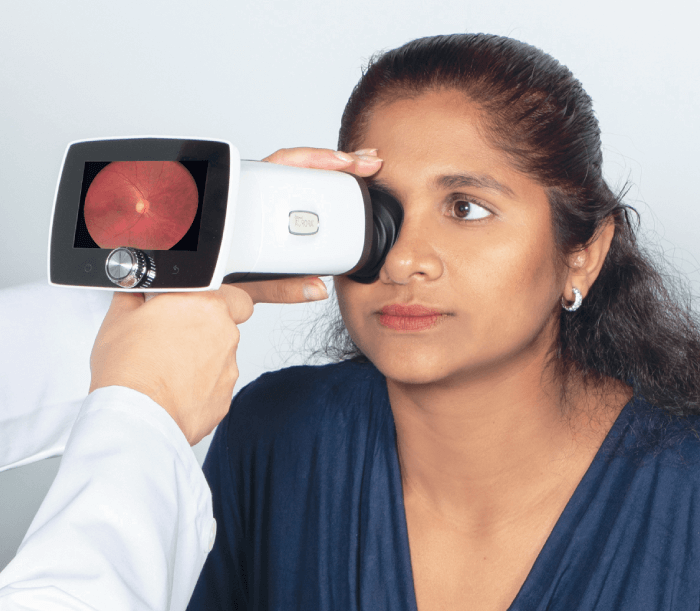
Studies have shown that 80 percent of all vision impairment is considered avoidable by early detection and appropriate treatment (1). Additionally, the WHO has estimated that diabetic retinopathy, which is the most common cause of vision loss in working-age adults, is responsible for 4.8 percent of global blindness (2). As the number of ophthalmologists is limited, especially in rural and developing regions, the majority of diabetics lack access to regular screening. Thus, provision of effective and accessible eye care services is the key to controlling visual impairment, including blindness (3).
Recognizing the demand, Finnish medical technology company Optomed is helping smaller clinics and primary care settings make their eye screening programs more accessible to patients by providing them with cost-efficient handheld fundus cameras.
Optomed’s latest offering is the new Aurora IQ handheld fundus camera, which uses artificial intelligence and cloud computing to automatically screen for diabetic retinopathy within seconds – perfect for medical professionals who usually have limited time available for each patient. By focusing on affordability and efficiency, the Aurora IQ represents a real leap forward in retinal screening – and eye care more generally.
Detecting early stage changes in the retina requires high optical performance – now possible thanks to the Aurora IQ’s redesigned high contrast optics. At the same time, an image quality analysis function helps first-time users immediately acquire great images. It’s also easier to use, thanks to other smart features, including automatic image exposure. Additionally, the camera has a 50-degree field of view and is non-mydriatic, so pupil dilation is not needed.
In today’s digital world, there is a need for connecting to various hospital systems, secure data transfer and storage, and fast and reliable analysis. Optomed has tackled these demands with Aurora IQ’s versatile connectivity.
Optomed’s portfolio of software solutions for eye screening programs includes a traditional image viewer, Avenue Viewer, and a telemedicine tool, called Avenue Telemedicine. Moreover, a comprehensive screening workflow management solution, Avenue Eye Screen, can be used to establish effective regional screening programs even on a national level.
Optomed’s Aurora IQ handheld fundus camera is designed to address multiple challenges to a singular aim: to improve access to eye screening and to help prevent avoidable blindness.
For more information, visit www.optomed.com
References
- WHO, “Action plan for the prevention of avoidable blindness and visual impairment for 2014-2019.” Available at: https://bit.ly/3ms0EoF.
- WHO, “Prevention of blindness from diabetes mellitus,” (2006). Available at: https://bit.ly/31IKBe8.
- J Pieczynski, A Grzybowski, “Review of Diabetic Retinopathy Screening Methods and Programmes Adopted in Different Parts of the World,” European Ophthalmic Review (2015). Available at: https://bit.ly/3oz8IWn.
